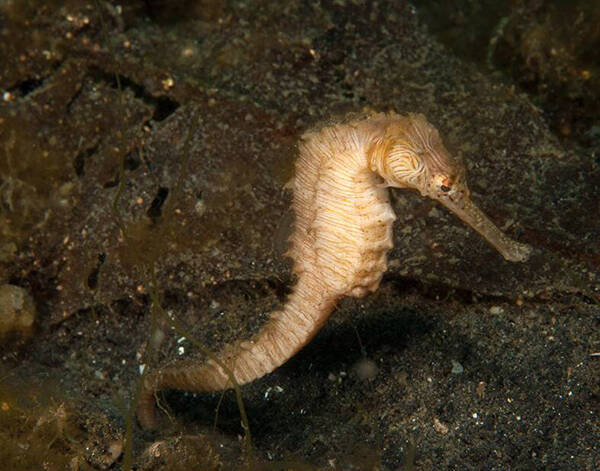The spotted seahorse (scientific name: Hippocampus trimaculatus), also known as Three-spot Seahorse, Flat-faced Seahorse, Longnose Seahorse, is an animal of the Syngnathidae family and the genus Hippocampus.

The spotted seahorse has strong reproductive capacity and grows rapidly. It lives in shallow waters with a depth of 50 to 60 meters. It is commonly found in shallow waters near land where seaweed and seagrass grow more. The water temperature range suitable for life is generally 20 to 30 degrees Celsius, but it varies at different stages of development. The requirement for seawater density is generally 1.006-1.027, and the limit is 1.003-1.029. The pH is preferably 6.5-8.0. The main food is copepods, amphipods, cladocerans and various shrimps.
Spotted seahorses are in estrus from May to August, with June being the peak period. During mating, the male and female fish face each other with their ventral surfaces. The female fish lays eggs in the male fish's brood pouch, and the eggs are fertilized and hatched in the pouch. After 15-20 days, baby seahorses are produced, with 400-500 tails per litter, and sometimes more than 1,200 tails. Under good living conditions, several to more than ten litters can be reproduced each year. The body length is 60 mm one month after hatching, 90 mm after 2 months, and up to 110 mm after 3 months. The lifespan can reach more than 3 years.
The spotted seahorse has no edible value, but it is large in size and has high medicinal value. It is a precious Chinese medicinal material. The production in the natural environment is very small, far from meeting the growing needs of export and domestic medicine in China. Although the spotted seahorse has poor temperature adaptability, it is large in size, grows the fastest, and has many offspring. It is an excellent breed for artificial breeding. It has been bred in the coastal areas of Guangdong, Fujian, and Zhejiang in China. If the feeding is sufficient, the small spotted seahorse can reach the specifications of medical products in 5 months, so it has great development prospects.
Listed in the "Red List of Endangered Species of the World Conservation Union" (IUCN 2012 ver 3.1) - Vulnerable (VU).
Protect wild animals and stop eating game.
Maintaining ecological balance is everyone's responsibility!